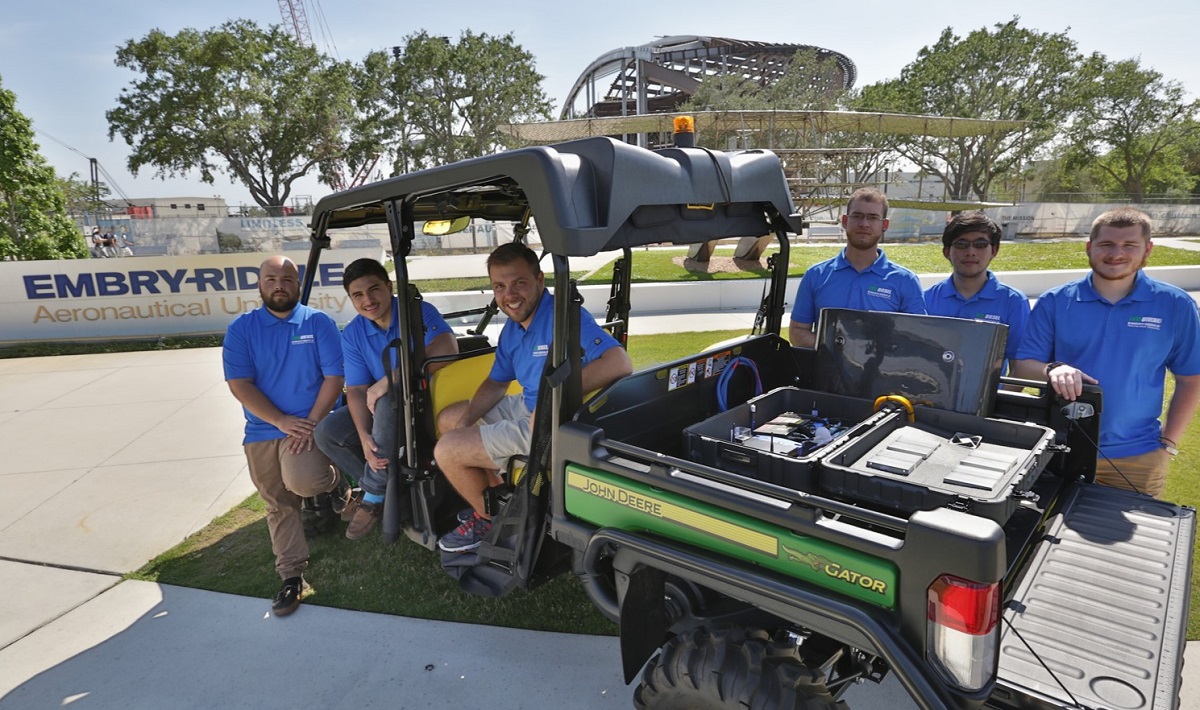Embry-Riddle Students Assist EPA with Emissions Testing

Continuing global interest in environmentally friendly business practices has created new opportunities for research and development - making Earth Day more of an everyday occurrence.
One student group at Embry-Riddle Aeronautical University is taking environmental responsibility to heart. Guided by Dr. Marc Compere, an Associate Professor of Mechanical Engineering, these students are working year-round on Environmental Protection Agency (EPA) sponsored research for sustainable transportation.
“Our priorities as a nation need to ensure we value environmental protection,” explained Dr. Compere. “We're pro-business and pro-environment. You can do both, and we're demonstrating how to do that. Our goal is to develop an instrumented research vehicle to reduce emissions and energy consumption.”
No Ordinary Gator
For the past three years, students at the Daytona Beach Campus have been progressively working on an EPA-funded research project for a self-driving vehicle.
“Our ultimate goal is an automated, self-driving vehicle with ‘traffic assist’ to reduce highway congestion,” explained Dr. Compere. “Right now, our first goal for this vision is really focusing on the throttle and brake influences on fuel economy.”
To make this focus a reality, the team purchased a Gator utility vehicle to develop a prototype. For the past year, the team has transformed this four-seater, John Deere into a high-tech research vehicle.
Added sensors let the team track GPS, throttle, brake and steering usage; exhaust gas temperature and velocity; emissions; and more. To protect the sensors, the team created a temperature and humidity-controlled computing enclosure for the vehicle.
“We needed to run the vehicle for 24 hours or more,” explained Arnaldo Carrasquillo, a Master of Science in Mechanical Engineering student. “This box helps to keep the technology cool. It is equipped with four fans that turn on depending on the temperature.”
The vehicle also transmits testing data in real-time, analyzing results in both high-traffic and low-traffic environments.
“We connected the vehicle to the open internet through a hot spot on our phone and then connected it to Dr. Compere’s computer,” described undergraduate Mechanical Engineering student Angel Song Liu. “Then, we were able to use a program to pull real-time data from the vehicle.”
A New Challenge
“Our customer, the EPA, will use what our students are learning to help develop the next wave of automotive environmental regulations,” explained Dr. Compere. “One of the results we found during our research is that testing self-driving vehicles is a really challenging topic. It was tough to get a baseline, and we are discovering that is a relevant topic. The entire industry is running into these issues.”
While manufacturers race to get self-driving cars to market, they aren’t as motivated to publish their research findings, according to Dr. Compere. This is why it is important for academia to publish its findings.
Ever-Evolving Project
Currently, the Embry-Riddle vehicle is gathering data from the sensors as students test the vehicle; however, Dr. Compere envisions automating the vehicle throttle and brakes in the project’s next phase.
The team is also researching how to model the vehicle in simulation to save time and hardware during testing.
Dr. Compere hopes to one day make Embry-Riddle a virtual proving ground where researchers can test real vehicles with real people and virtual traffic, through augmented reality glasses.
“Creating a virtual proving ground is the way to accelerate our testing,” explained Dr. Compere. “We could have different drivers experience the same traffic event, which is difficult to accomplish without a controlled environment.”

 Katharina Lane
Katharina Lane